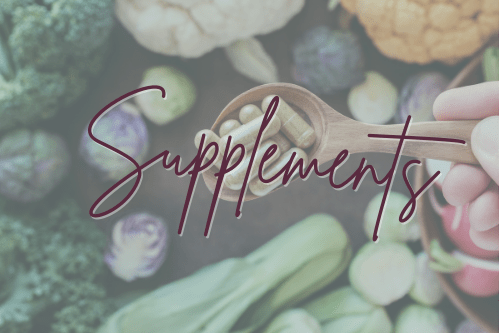If you’ve been following my writing for a while, you know that I promote eating vegetables. Lots of vegetables. Something green at every meal is my mantra. Vegetables, especially greens, provide a plethora of health benefits.
- Vegetables are packed with vitamins, minerals, and antioxidants crucial for many body functions.
- Vegetables provide dietary fiber that helps regulate digestion, prevents constipation, and promotes gut health.
- Eating plenty of vegetables is linked to a lower risk of chronic diseases such as heart disease, stroke, certain cancers, and diabetes. Rich in potassium, vegetables can also help improve blood pressure.
But lest you think I ONLY eat vegetables, this post is about the importance of consuming adequate protein at each meal.
A Fundamental Building Block
Protein is a fundamental building block, yet its importance beyond building muscle is often underestimated. Protein plays a crucial role in nearly every biological process in your body, from maintaining healthy skin and hair to supporting immune function and enzyme production.
When you digest protein, your body breaks it down into amino acids, the raw material for countless body functions. These amino acids help repair tissue, produce hormones, and maintain fluid balance. Protein isn’t just for bodybuilders – it’s vital for everyone.
A feature of protein is its role in satiety. Foods rich in protein can help you feel fuller longer, making it easier to maintain a healthy weight. This feeling of satiety comes from protein’s influence on your hunger hormones (leptin and ghrelin) and its slower digestion rate than carbohydrates.
The amount of protein each person needs varies based on age, height, weight, activity level, and overall health goals. While athletes might require more protein to support muscle recovery and growth, sedentary individuals also need adequate protein to maintain essential body functions.
Timing protein consumption throughout the day, rather than consuming it all at once, is one way to optimize its benefits. This approach helps maintain steady amino acid levels in the bloodstream and supports continuous tissue repair and maintenance.
Quality matters as much as quantity when it comes to protein intake. Complete proteins containing all essential amino acids generally come from animal sources. However, if you follow a vegetarian or vegan diet, you can obtain complete protein profiles by combining different plant sources throughout the day.
How to Meet Your Protein Needs: A Practical Guide
Protein is critical for building and repairing tissue, producing enzymes and hormones, supporting the immune system, and providing energy when needed. But how can you ensure you’re meeting your daily protein needs? Here are some practical tips.
Include Protein in Every Meal
Make it a point to include a source of protein with every meal. Yes, EVERY meal. Make protein the centerpiece and build around it with vegetables, whole grains, and healthy fats. [I’ll write about healthy fats in a future post.] Spread your protein intake throughout the day to help your body utilize it more efficiently.
- Examples: Start your day with eggs or unsweetened Greek-style yogurt and granola, enjoy grilled chicken or tofu for lunch, and have fish or lentils for dinner.
- Balanced Meal Example: Grilled salmon (protein), quinoa (protein and grain), roasted Brussels sprouts + a side of greens with a rainbow of vegetables on top.
Choose a Variety of High-Quality Protein Sources
A diverse diet ensures you get all the essential amino acids your body needs. Combine nutrient-dense, high-quality protein sources (animal- and plant-based) to balance your approach.
- Animal Sources: Chicken, turkey, fish, eggs, dairy
- Plant Sources: Lentils, chickpeas, edamame, black beans, tofu, tempeh, quinoa, chia seeds, hemp seeds
Protein Add-ons
It’s easy to sneak in extra protein by adding it to an existing meal or having a mid-day snack. Nutrient-dense, high-protein options help keep you satiated and energized until your next meal.
- Snack ideas: Nuts, seeds, hardboiled eggs, hummus with veggies, nut butter and apple slices, high-quality protein bars. Here’s my new favorite.
- Meal add-ons: Sprinkle a variety of nuts and seeds on oatmeal, salads, and steamed vegetables, or include a tablespoon of cooked beans on the side.
Monitor Your Protein Sizes
Understanding your protein needs can help you tailor your daily intake. To achieve optimal health and fitness, most people require between 0.54 and 0.82 grams of protein per pound of body weight per day. Highly active individuals, pregnant women, and those recovering from illness often require more for periods of time.
- Example: A 150-pound person would require between 80 and 123 grams of protein per day. Divide those numbers by 3 (number of meals per day) to get the number of grams of protein to consume at each meal (~25-40 grams).
In addition to encouraging my clients to add a variety of vegetables to their daily meals, I’m a stickler for ensuring they optimize their protein intake.
Adding protein to your meals, a vital part of a healthy diet, doesn’t have to be complicated. I challenge you to select one tip from the list above. Be mindful of ways you can implement that tip this week. After a few weeks, reach out to share your observations.
Need help calculating an amount of protein that supports your body and lifestyle? Use this online calculator or contact me.
You deserve to be healthy and strong!





